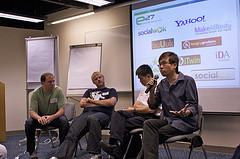 The name "Echelon" world first heard in 1980. By this term conceals the rail alliance of the five English-speaking countries, unbeknown to all of humanity create a global system of electronic espionage, for which available for almost any secrets transmitted by electronic means. Base for Echelon served as a powerful technical intelligence unit created during the Second World War, the U.S. secret services and the uk. They then proceeded to create a global system of listening. The official history of Echelon begins in 1947 when the United States and Britain had signed a secret agreement ukusa Agreement, in which the two countries to pool their technical and human resources in global espionage. A little later they were joined by Canada, Australia and New Zealand. And then – a number of nato countries, including Norway, Denmark, Germany and Turkey. Duties of the alliance members were clearly stipulated in the agreement. At Echelon, along with ground-based complex employs hundreds of satellite tracking systems, and dozens of submarines, the main task is to attach to underwater bugs cables. And they cope with it fine. For example, the summer of 1979 the U.S. submarine "Parch" was held in San Francisco under the ice of the northern polyucha in the Barents Sea and affixed to the beetle underwater cable near Murmansk. He worked until 1992 as long as Americans are not prekratidi plays, allegedly in connection with the collapse of the Soviet Union. Development of computer networks has made the work even more sophisticated Echelon – by wiretapping phone added interception e-mail.
The name "Echelon" world first heard in 1980. By this term conceals the rail alliance of the five English-speaking countries, unbeknown to all of humanity create a global system of electronic espionage, for which available for almost any secrets transmitted by electronic means. Base for Echelon served as a powerful technical intelligence unit created during the Second World War, the U.S. secret services and the uk. They then proceeded to create a global system of listening. The official history of Echelon begins in 1947 when the United States and Britain had signed a secret agreement ukusa Agreement, in which the two countries to pool their technical and human resources in global espionage. A little later they were joined by Canada, Australia and New Zealand. And then – a number of nato countries, including Norway, Denmark, Germany and Turkey. Duties of the alliance members were clearly stipulated in the agreement. At Echelon, along with ground-based complex employs hundreds of satellite tracking systems, and dozens of submarines, the main task is to attach to underwater bugs cables. And they cope with it fine. For example, the summer of 1979 the U.S. submarine "Parch" was held in San Francisco under the ice of the northern polyucha in the Barents Sea and affixed to the beetle underwater cable near Murmansk. He worked until 1992 as long as Americans are not prekratidi plays, allegedly in connection with the collapse of the Soviet Union. Development of computer networks has made the work even more sophisticated Echelon – by wiretapping phone added interception e-mail.
Month: November 2012
Nuclear Research Laboratory
Tim Berners-Read, while it worked like independent consultant in a nuclear research laboratory in 1980, developed an innovating form to store information in a called program Enquire. That work was used more ahead as the base for the development of a system of global hypertext – popularly known like Internet or the World Wide Web. The WWW was developed to increase the facility whereupon the people can interchange information. This became a reality with the introduction of the first WYSWIG (What You see Is What You obtain) of the navigating Web of hypertext that was written by Tim Berners-Read. The advantage of the WWW with respect to the previous systems was that a centralized servant did not need. Briefly, that meant that it was easy to recover, which supposed a great advance in computer science science. The Web and the first Web server were set free to the communities of hypertext in the middle of 1991, after being released in the CERN at the end of 1990.
With the purpose of to reach a coherent level of the WWW, the specifications were published for directions URL, HTML and HTTP. Universality I force these specifications, not to depend on a central servant and the decision of Berners-Read of not removing benefit from the WWW I take at a high level of adoption of the technology between 1991-94. In the first servant of Internet during this period, an increase of ten times in the annual traffic was registered. With the coming of the Web, a series has arisen from derived technologies. An ample range of side of the servant, client and data base of languages has been created to satisfy the needs with companies and individuals. There are two types of used programming languages in the Web: the language of the client and the one of the servant. The language of the client is executed in the navigator of the users, does not depend on the Web server, and it is realised almost exclusively with Javascript.